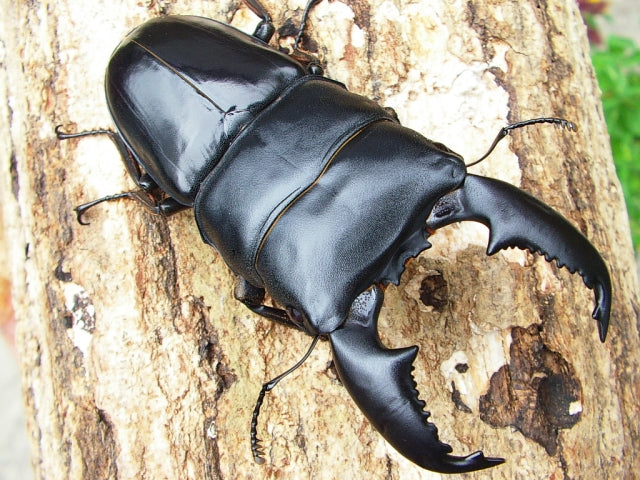
Dorcus titanus yasuokai caresheet
Share
Adults:
- Size: 40-105mm
- Adult life span once active: 13-20 months
- Temperature: 68-78°F
- Humidity: 60-80%
- Food: Beetle jelly or fruits(no citrus)
- Housing tip: It's better to keep adult beetles in their individual containers because even females are aggressive towards each other.
Breeding:
- Required temperature for breeding: 70-80°F
- Minimum container size for egg laying: 8 in x 4 in x 8 in. Bigger containers are always the better option for breeding!
- # of eggs laid on average: 10-24
- Flake soil humidity adjustment: The amount of water is appropriate when you can form a ball by squeezing the flake soil with your hand. Water seeping out of your hands during the process indicates that there is too much water.
- Set-up: Pack the bottom 5in of the container tightly and fill up the remaining space loosely with flake soil. Place objects such as sticks or barks at the top so that the beetle can flip itself over if needed. Lastly, don't forget to regularly give fruits or beetle jelly for the beetle to feed!
Set-up example:

- Set-up #2: Place some flake soil into the container and place white-rot logs on top. If the female accepts the logs as a suitable place to lay eggs, you will see burrow marks and wood shavings.
Set-up #2 example:

Some females are very picky on where they lay their eggs!!
Larvae:
- Food: Flake soil, white-rot hardwood, or kinshi(hiratake or kawaratake)
- Temperature: 66-78°F
- Humidity: 60%
- Larval duration: 5-12 months
- Container size recommendations:
- L1: 4oz deli cup
- L2: 16oz deli containers
- L3 female: 32 oz deli container
- L3 male: 32oz container. As they grow bigger, move them to a 2-3L container.
Personal notes:
- Since this species has a long life span, it is better to let the adults mature for a few months before mating takes place.
- Adult males can potentially kill females during the mating process.
- Feeding the larva kinshi can potentially lead to bigger males
- Male larvae can grow up to 50g or more, which is why big containers are needed once they hit the L3 stage.
- Female larvae tend to pupate faster than males.